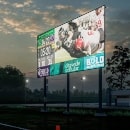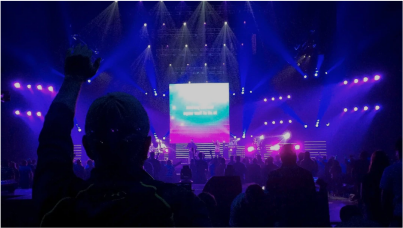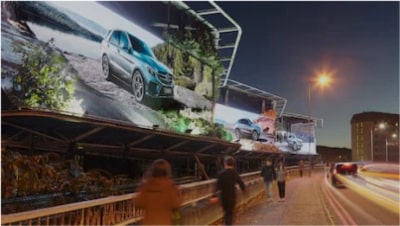LED Display Resolution Guide
When considering an LED display such as an electronic sign, electronic billboard, or electronic digital scoreboard, the resolution is one of the most important factors to consider. With the ideal resolution on your led screen, you can expect your LED panel to display at a high definition with high resolution. Without a good resolution, you can expect poor image quality and picture quality.
But what are the ideal resolution settings you need to keep in mind? Let's explore this further in our LED display resolution guide.
What is LED Resolution?
Resolution refers to the number of pixels in the display on your led screen. Higher resolution provides additional definition and clarity, allowing you to experience HD resolution on your LED display, LED screen, or LED sign.
The resolution of your LED display will depend on its intended use, and minimum viewing distance. For example, the resolution and clarity on a computer monitor will differ greatly from outdoor LED signage. This is because the digital signage is intended for a much more distant viewer.
Computer Resolution
The average computer monitor has a pixel resolution of 600 high x 800 wide for a total of more than 480,000 pixels on the viewing screen, with 0.25mm space between pixels. High-definition (HD) televisions and computer monitors can have upwards of two million pixels within the display. A standard video signal (NTSC) has a native resolution of 640 x 480 pixels. HD resolutions vary from 720 H x 1280 W or 1080 H x 1980 W.
LED Sign Resolution
In electronic LED signs, billboards, and scoreboards, the resolution is based on two primary factors: the matrix area and pitch. The level of detail the LED display produces is reflective of the number of pixels that are used to create the image. The smaller the pitch and larger the matrix area, the greater the resolution will be.
Typically, pixel pitch for indoor displays are 6mm, 10mm, 16mm, and 20mm, and 16mm, 20mm, 25mm, and 30mm for outdoor displays. Outdoor displays are engineered to be larger than indoor displays because the expected viewing distance is much greater.
The matrix area, also known as the pixel matrix, corresponds to the total number of pixels within the display area. The matrix area is determined by multiplying the number of pixels vertically by the number of the pixels horizontally, such as 16x32. The matrix area determines how many pixels there are, and overall size is a key factor in determining the number of pixels available to produce an image in a given space constraint.
The pitch is the distance measured from the center of one pixel to the center of the next pixel. Pitch can also influence the pixel matrix for a given surface area.
For example, a 16mm pitch will allow a 5x7 matrix area, but a 10mm pitch will allow an 8x11 matrix area for the same physical area because the 10 mm pitch is a tighter grouping of diodes. A lower pixel pitch has less empty space between pixels than a large pitch. The lower the pitch, the greater the number of pixels per the height and width of the display, thus creating a higher LED display resolution.
For example: 9ft x 16ft LED Display
18mm pitch: 144 x 256 pixels and display resolution
36mm pitch 72 x 128 pixels and display resolution
Ultravision LED Solutions Optimum Resolutions
Ultravision LED has determined through 20 years of experience and various types of diodes and displays that the optimum minimum and maximum viewing distances are calculated as follows:
Minimum distance = 2’ x pitch; Example: 2’ x 12mm = 24’
Maximum distance = minimum distance X 7; Example: 24’ x 7 = 168’
It is important to keep in mind the kinds of images that are to be displayed. Static graphic images do not necessarily require a higher resolution than full-motion video images require. Most buyers of electronic LED signs and scoreboards make a buying decision based on the actual image reproduction and desired impact.
Keep these guidelines in mind:
VIEWING DISTANCE
- Minimum 1-inch tall character per 50 feet distance
- Character: 8 pixels tall; 6 pixels wide
TYPE OF CONTENT (TEXT, ANIMATIONS, VIDEO)
Text: 8 pixels tall per line of text
Animations: 48 pixels tall x 64 pixels wide
Video: 144 pixels high X 256 pixels wide (16:9 or 1.78)
144 pixels high x 192 pixels wide (4:3 or 1.33)
Here are some basic message considerations for graphic displays that have proven the most effective:
- Viewing time between three and four seconds is needed for car traffic to properly view six to eight content groupings
- For example: “RED CROSS VOLUNTEERS NEEDED. CALL 555-1212” = six groupings of text
- Foot traffic areas = inch text (indoors)
- Automobile traffic at 45mph or less = to inch text (churches, schools, car washes, etc…)
- Automobile traffic at 60mph or less = inch text or larger (most outdoor applications)
In the past, manufacturers would advertise their displays as a higher resolution but were actually manufactured in a staggering array and utilized adjoining pixels to “smooth” the video image being displayed. This technique delivered very poor quality for static images such as text and logos.
Now, thanks to advanced technology, Ultravision LED Solutions leads the industry with revolutionary enhanced pixel resolution that works supremely with everything; video animation, text, and graphics. We will always showcase your work in the highest quality possible.










